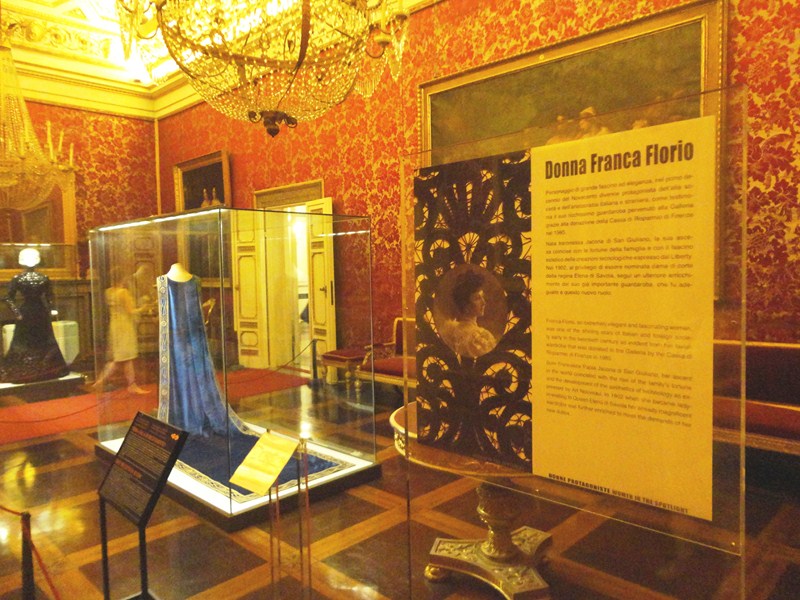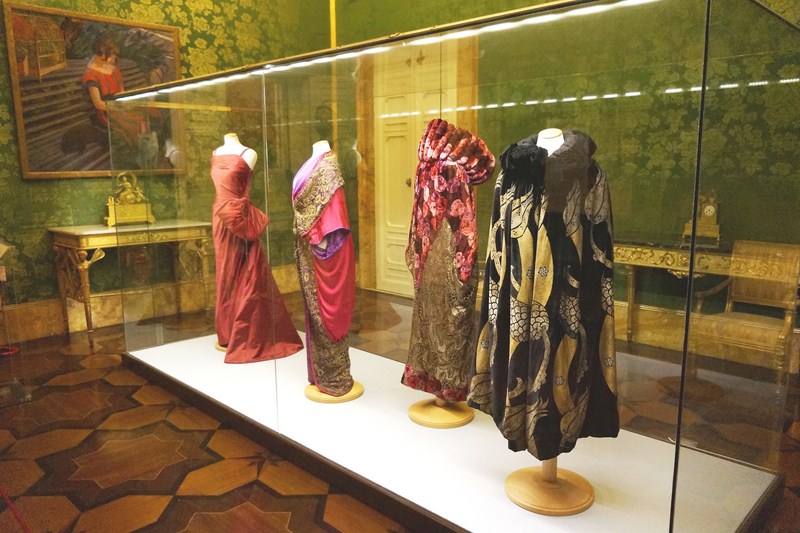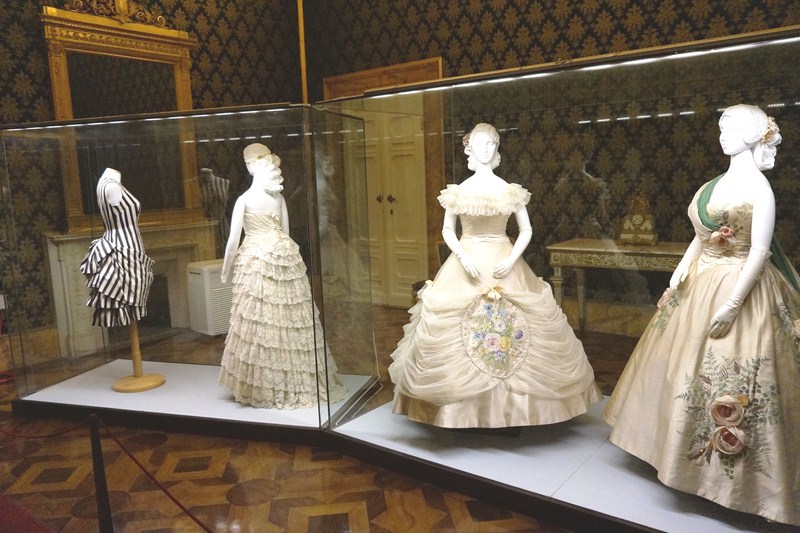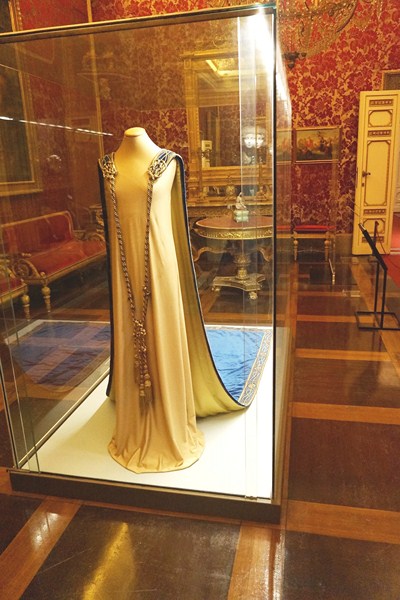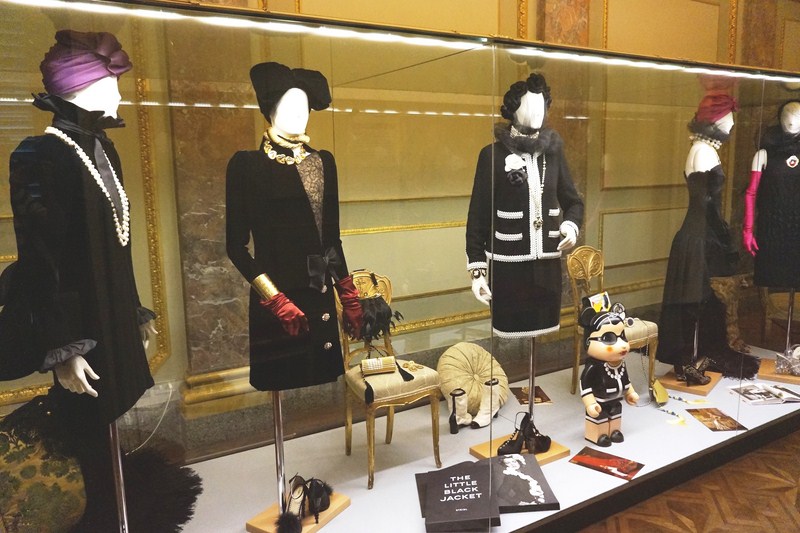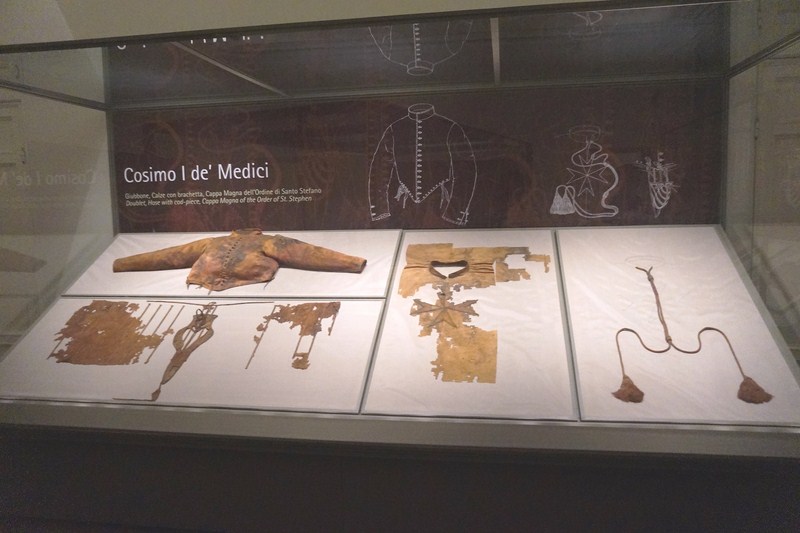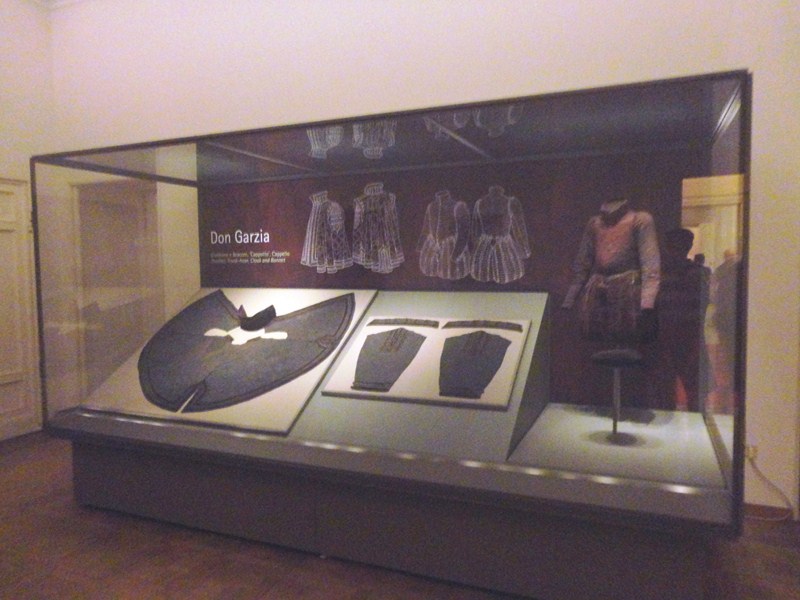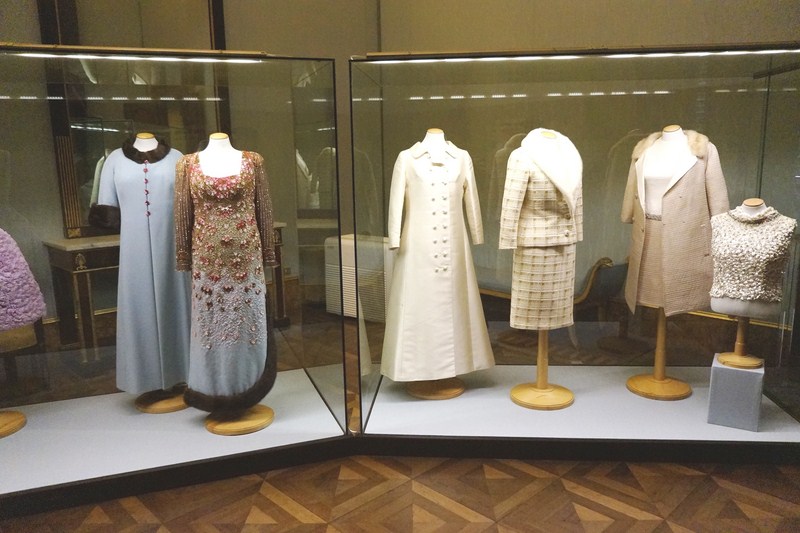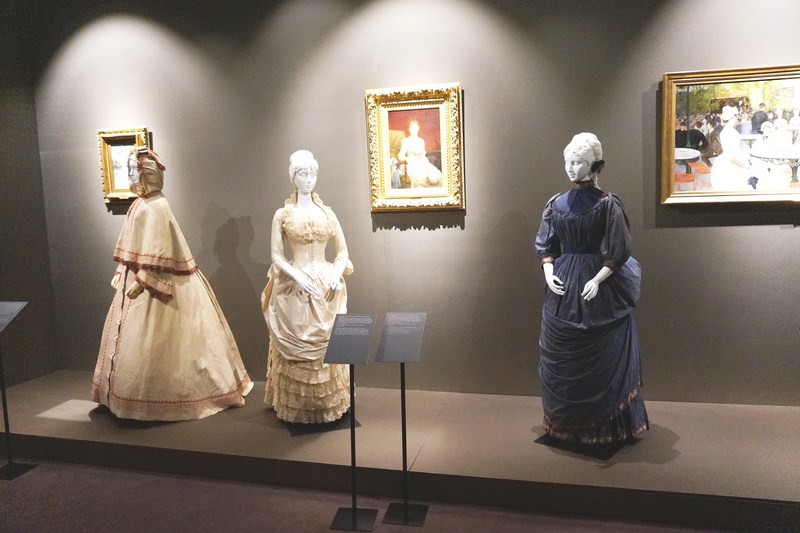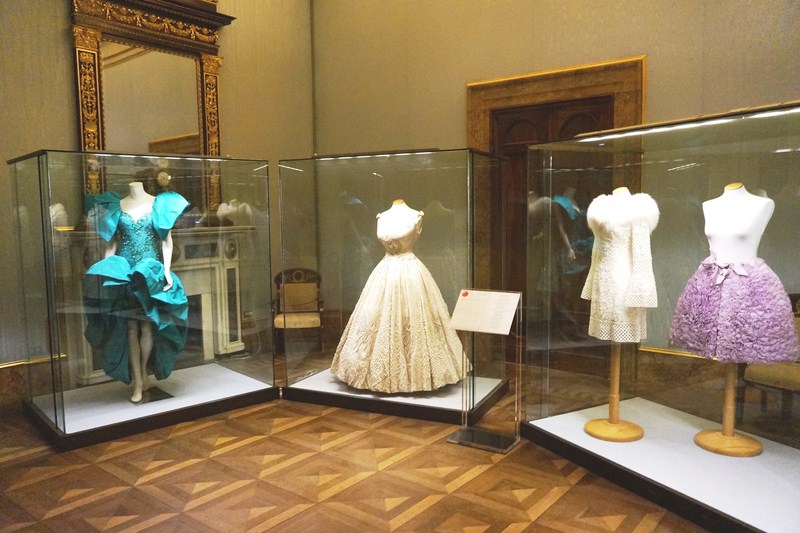The Costume Gallery (Galleria del Costume), the only National Museum in Italy exclusively dedicated to the history of fashion, is housed in a small southern building wing of the Meridiana (Palazzina della Meridiana), a suite of 14 rooms (completed in 1858) of the Pitti Palace.
Founded in 1983 (one of the newer collections to the palazzo) by Kirsten Aschengreen Piacenti, it is home to more than 6,000 pieces, including clothing and fashion accessories from the eighteenth century to the present day. They include a group of about 90 theatrical costumes belonging to the Sartoria Tirelli, gathered by Umberto Tirelli, founder of an important tailoring, and a collection of fashion jewelry of the twentieth century (dating from the 16th century until the present).
The semi-permanent exhibition of the Lorraine/Savoy rooms display pieces from the museum collection of historical clothes and accessories, previously stored in the palace´s warehouses. They include court and gala gowns (including clothes from Sicilian aristocratic Donna Franca Florio, one of the most famous European personalities during the Belle Epoque), haute couture dresses; ready-to-wear clothes, custom-made Florentine and Neapolitan bridal gowns from the early 1900s; as well as Italian cinematic, theatrical and music divas costumes (including dresses of Eleonora Duse, one of the most famous Italian theater actresses), all organized in chronological and thematic paths.
The collections also feature whole clothes collections of celebrities, also of great historical and documentary value, creations of the most famous designers of the twentieth century – Lucile, Versace, Valentino, Loris Azzaro, Armani, Renato Balestra, Missoni, Roberto Cavalli, Ken Scott, Yves Saint Laurent, Chanel, Gucci, and Prada.
Some of the exhibits are unique to the Palazzo Pitti. Composed of clothes once belonging to members of the Medici family who ruled Florence during the Renaissance, they include the fine, recently restored 16th-century funeral clothes of Grand Duke Cosimo I de’ Medici, and Eleonora of Toledo and her son Don Garzia, both of whom died 15 years before from malaria, worn while they were being displayed in state (they were reclad in plainer attire before interment).
The richly-decorated galleries of the museum, equipped with air-conditioned display stands, display dresses on mannequins with female body structure (constricting structures such as corsets often changed the body) typical of the period in which the dress was made. The dancing hall, among other rooms, is used for temporary exhibitions of great interest.
For didactic purposes and in order to represent the evolution of fashion, the exhibits are updated regularly every two or three years with different selections of clothes, a decision that originates from the need of guaranteeing their preservation. It also offers the opportunity of displaying the patrimony preserved in the depository, mostly from public and private donations. Visitors can browse the story of costume, from the Renaissance to present day, through an extensive set of dresses and accessories, combined with contextual images and description panels.
The gallery’s heritage is enriched by an archive paper with drawings, sketches and patterns of important figures such as Thayaht, Cesare Guidi, Simonetta Colonna di Cesaro and Alberto Fabiani. The gallery also exhibits a collection of mid-20th century costume jewellery and accessories. The Meridiana building, close to the gallery, is also the seat of a fabric restoration laboratory which is essential for the maintenance of clothing and accessories.
Costume Gallery: Palazzo Pitti, Piazza de’ Pitti, 50125 Florence, Italy. Tel: +39 055 238 8611. Amission: € 7.00. Open daily, 8:15 AM – 4:30 PM (November to February), 8:15 AM – 5:30 PM (March, winter time, October winter time), 8:15 AM – 6:30 PM (March, summer time, April, May, September, October, summer time), 8:15 AM – 6:50 PM (June to August). Closed on the first and last Monday of each month, May 1 and Christmas.

